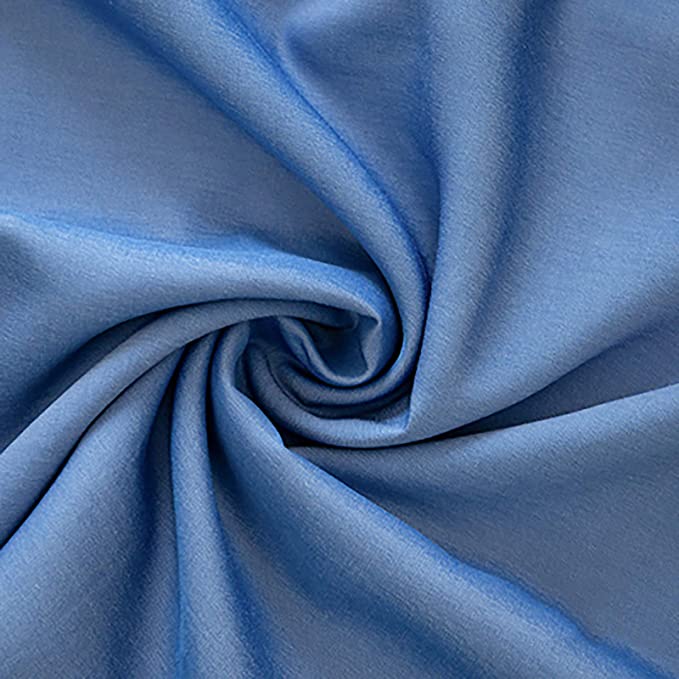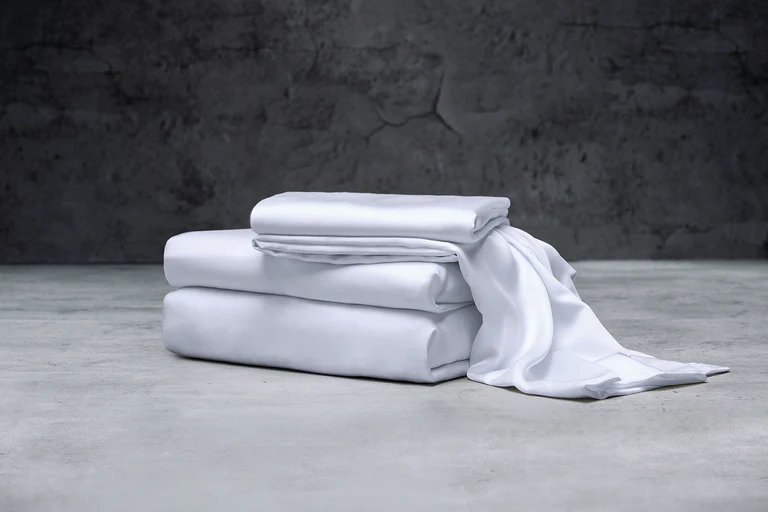In the rarest of cases, garments are made from just one ingredient. Especially on the labels of sports and functional clothing, there is usually a lot to read in addition to the care instructions: Blended fabrics of cotton and polyester, merino wool and spandex, viscose and nylon– the combination possibilities are endless and a fabric even often contains far more than just two components. Why the sports and outdoor industry likes to use blended fabrics and what to consider when buying and caring for them, you can find out here.
Blended fabrics combine the best properties from different worlds
The combination of at least two types of fibers in a blended fabric aims to compensate for their disadvantageous properties or to combine the different advantages. Natural and synthetic fibers are particularly frequently combined in a fabric in order to achieve a perfect wearing feel and better processing and care options, or simply to make the material more affordable.

Outdoor is nature, an attitude, a key competence for a regenerative economy. Be there at the next OutDoor by ISPO from 04 к 06 June and get insights from the industry and the community.
Blended natural and synthetic fibers are ideal for sportswear
Cotton and polyester are predestined partners for very high-quality blended fabrics: The natural fiber ensures high breathability and great wearing comfort. The synthetic fiber contributes the prerequisites for elasticity, shape retention and durability. This makes these blended fabrics wonderfully suitable for active wear, outdoor and functional fabrics, such as Fjällräven’s G-1000. Depending on the requirements of the textile, the blend ratio of the so-called polycotton varies – the cotton content is usually between 50 и 65.
The synthetic fiber content in the blended fabric ensures optimal moisture management
Neither natural nor synthetic fibers alone have optimal moisture management. Cotton, for example, is very absorbent, but dries very slowly. Synthetic fibers can hardly absorb any moisture and therefore quickly feel uncomfortable on the skin when sweating. A blended fabric of both fiber types eliminates these disadvantages: The synthetic fiber content supports the transport of water vapor, while the cotton ensures that it absorbs perspiration and is breathable.
Trend: blended fabric with merino wool
The synthetic fiber combination also brings about the same advantages in blended fabrics with merino wool: wool shirts become easier to care for, more durable, more shape-retaining and elastic when synthetic fibers are added. Кроме того, a blended fabric of merino wool and synthetic fiber is more breathable than a pure wool product.
Полиэстер, polyamide, elastane, polyacrylic – what is the best addition?
There are many different textile fibers from the chemistry lab and they bring different capabilities. Polyester or polyamide are most commonly found in blended fabrics because both are very uncomplicated and inexpensive. The fibers provide stability in the fabric, make it lighter on balance and allow it to dry faster. Spandex is always used when it comes to stretchability, and polyacrylic is added for better sweat management.
How sustainable are synthetic blended fabrics?
As many advantages as blended fabrics made of natural and synthetic fibers bring, the combination of natural and synthetic fibers is not entirely unproblematic. Every synthetic fiber releases microplastics when washed, which are discharged directly into the environment via wastewater. When buying, look for blended fabrics that contain recycled synthetic fibers, often labeled rPET (click here for thelisticalwith sustainable sneaker brands). For these, no new resources were consumed. Однако, it is also important to know that there is still no mature technology for recycling synthetic fibers from blended fabrics again, because the separation of the different components is very difficult.
The most susceptible component determines the maintenance requirements of the blended fabric
From a sustainable perspective, functional clothing made from blended fabrics should only be washed as often as absolutely necessary. The synthetic fiber content can withstand a lot of care, but does not make the natural fiber content any less susceptible. That’s why the natural fiber usually determines the amount of care required when washing: blended fabrics with cotton and viscose are the least complicated, while (merino) wool is the most susceptible. It must not be washed too hot, dried or ironed.
Заключение
Blended fabric offers several advantages: The material combines the good properties of a wide variety of fabrics and is ideally suited for the production of sportswear. Однако, blended fabric is not harmless in terms of environmental protection – microplastics are released during washing, which are directly released into the environment through wastewater.

FAQ
Finally, we answer frequently asked questions on the subject.
What is blended fabric?
Blended fabrics consist of cotton and synthetic fibers. Microfiber fabrics are also used as basic materials. It is important to pay attention to the correct care, because the washing temperature and duration are determined by the most sensitive fabric in the blended fabric.
Which is better cotton or blended fabric?
The advantages of blended fabric over cotton include the fact that blended fabric hardly wrinkles and dries faster. A possible disadvantage is the fabric sensitivity, because the washing processes are based on the most sensitive fabric in the blended fabric.
Если вам нужна дополнительная информация о них,пожалуйста, проверьте адрес веб-сайтаhttps://www.jueaihome.com/fabrics/viscoselyocell/
